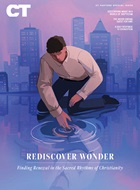LED stands for "light-emitting diode," a relatively new source of light. According to Wikipedia, the principle of generating light with a solid-state device was discovered early in the 20th Century, but it wasn't until the 1960s that useful LEDs became commercially available. Only recently have LEDs developed in brightness and color technology to be considered as sources of area illumination.
Today, stage and theatrical lighting equipment is beginning to incorporate LED technology, and manufacturers are touting massive savings in energy and increased lamp life. Is it time to embrace these new devices? Here is some basic information comparing a common stage luminary, a PAR 64 "can," in incandescent and LED technologies.
AMPERAGE (POWER CONSUMPTION)
A standard PAR 64 luminary typically uses a 300 to 1,000-watt incandescent lamp. Since incandescent lamps are very inefficient in turning energy into light, much of this power is converted into heat. Stage lights are hot!
PAR 64 luminaries with LED light sources use 20 to 75 watts on average, depending on the type and number of LED elements incorporated. (Note that watt ratings might be double this number because of a power surge at startup.) This gives the LED luminary a huge energy advantage, making it a great option where existing wiring and power supplies limit the use of high-wattage luminaries. The side benefit is much lower heat production, which can also keep a lid on air-conditioning costs.
BRIGHTNESS
Individual LED elements are small light sources that create a relatively bright but narrowly focused light. Even though an LED-based PAR 64 luminary incorporates a large number of LED elements, it will still fall short of the brightness obtainable with an incandescent lamp. In addition, LEDs create a white light noticeably different than that from incandescent sources, and may not be suitable for some applications.
However, LED-based luminaries can be perfect for applications that don't demand the highest possible brightness, such as supplemental stage lighting, backlighting, or accent lighting.
COLOR
Incandescent lamps produce a wide spectrum of colors that we see as white light. Gel filters place in front of the lamp remove some wavelengths of light, thereby creating colored light.
LEDs, on the other hand, actually emit "colored" light. A PAR 64 luminary can be outfitted with a combination of red, green, and blue LEDs. Using standard DMX-512 technology, an infinite range of colors (including white light) can be obtained by varying the intensity of the different colored LEDs. This makes the LED luminary very attractive for special-effect lighting.
COST
A standard PAR 64 luminary, with bulb, can be purchased for $100 or less. A full-color, DMX-512-controlled, LED-based PAR 64 will cost $200 to $500, depending on manufacturer and features. Consider that under normal use you'll probably build a new sanctuary before the LED-based unit burns out. Also, you won't need to purchase additional gel filters and all the accessories needed for color changes.
The bottom line is that LED-based stage lighting is here to stay. Like the early compact fluorescent lamps, shortcomings in brightness and cost will be overcome as the technology is refined. The price is sure to come down, too. So consider your applications carefully—LED technology might be what you need today. It promises to be an even better choice tomorrow.
Copyright © 2008 by the author or Christianity Today/Your Church magazine.
Click here for reprint information on Your Church.

Support Our Work
Subscribe to CT for less than $4.25/month

























